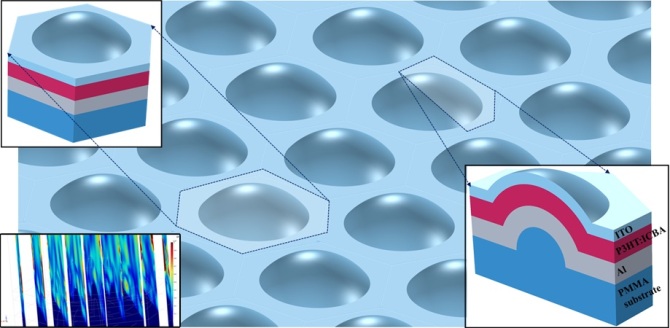According to a theoretical study from Turkey, braille-like bumps might enable light to enter the cell from more angles.
Solar panels of today are flat, and there is a good reason for this: the absence of texture allows for the maximum amount of surface area to be exposed to sunlight at any given time, regardless of where the sun is located in the sky. However, solar cell producers may be able to enhance the effectiveness of their cells by as much as two-thirds if they take the time to carefully pick surface textures that fall within the appropriate shape and size range. According to the findings of a theoretical study conducted in Turkey, braille-like bumps have the potential to allow light to reach solar cells from a wider variety of directions, hence providing a maximum boost of 66%.
Through the use of three-dimensional finite element analysis (FEA), Professor Dooyoung Hah, who is an assistant professor of electrical engineering at Abdullah Gul University, conducted independent experiments and experiments with solar cell texturing. Using this computational method, researchers are able to disassemble complicated systems into a collection of independent components known as “finite elements.” These elements can then be subjected to stress testing in nearly any scenario that can be conceived of. In order to explore with how the cells responded to light with and without additional surface structures, Hah employed three-dimensional finite element analysis to divide a hypothetical solar cell into sections.
Hah discovered that solar cells with hemispherical, shell-shaped bumps were able to capture light from a wider variety of orientations than flat cells. This was reported in a research that was published in the Journal of Photonics for Energy. Because of this, the textured cells were able to absorb transverse electric (TE)-polarized light at a rate that was 66% higher than their conventional counterparts. The efficiency of the textured cells was 36% higher than that of the flat cells when they were subjected to light that was polarised by transverse magnetic (TM) fields. Due to the fact that sunlight frequently gets polarised after being scattered in the atmosphere of the Earth, both types of light are crucial to the goal of solar cells, which is to capture sunlight.

A number of years have passed since this discovery was made. A comparable experiment was carried out by Hah in the year 2020, and it involved semi-cylindrical bumps in the shape of shells. The results showed that the cells’ absorption of (TE)-polarized light was boosted by up to 52% when compared to a flat structure. Two years later, Hah experimented with semicircular and triangle-shaped bumps, which resulted in an increase in the amount of (TE)-polarized light that was absorbed by sixty percent and sixty-three percent, respectively. The fact that textured solar cells were particularly effective in situations where they required to be wrapped around spherical objects was something that Hah mentioned in both instances. Due to the fact that the cells curved inward, the bumps did not cast shadows on each other, which enabled the maximum amount of light to be exposed.
The most effective textured solar cell that Hah has ever devised has not yet been constructed into a real form. In spite of the fact that three-dimensional finite element analysis may depict real-world strengths and weaknesses with remarkable accuracy, it is feasible that a physical solar cell would show inadequacies that cannot be identified through computer analysis alone. In order to determine if bumpy solar cells will allow homes to store excess solar power at unprecedented levels or whether they will increase renewable energy plants, additional experiments will need to be conducted; nonetheless, the findings that Hah has obtained are an encouraging beginning.

